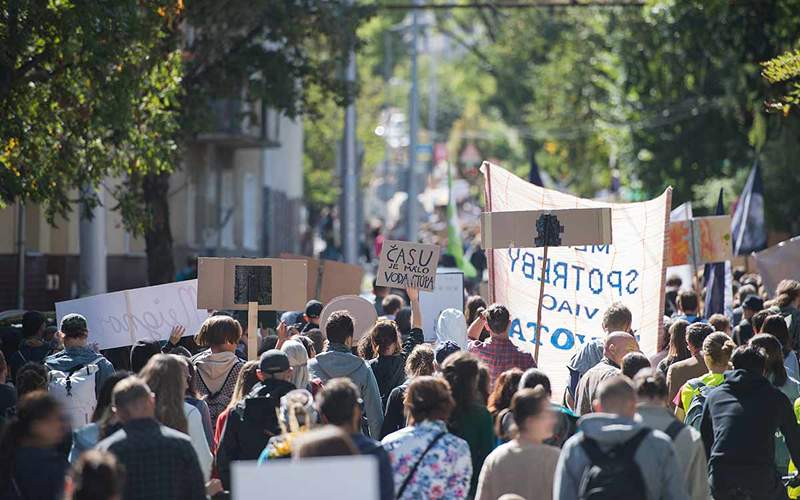The monster experiment

- 4231
- 554
- Austin Stokes
Of all cruel and atrocious experiments that have happened throughout history, without any doubt the experiment of the monster or "Monster study", carried out by pathologist Wendell Johnson was one of the worst, not only in ethics, but also in results.
Content
Toggle- What was the "Monster Study"?
- What were its consequences in affected children
- What happened after?
- References
What was the "Monster Study"?
In 1939, Johnson decided to drive a Study about stuttering In early ages. Because in the past he suffered from severe stuttering when he had been a child, he underwent a multitude of tests and studies at Iowa University to treat his condition.
Precisely because of this, that is why he decided to specialize in his studies in speech pathologies, being also encouraged by the rest of colleagues and colleagues to lead this controversial and for nothing fruitful study.
To do this, he used a small group of innocent beings: nothing more and nothing less than Children 5 to 15 years of an orphanage near Iowa. His basic argument to conduct this study was that stuttering was caused by feelings of anguish and nervousness by learning to speak.
Therefore, I wanted to prove how some children who had no symptoms of stutter.
On the opposite side, I also wanted to demonstrate how other children who already seemed stuttering could previously cure their condition if they were talked positive and were encouraged to remain calm when speaking or preparing their speech.
To do this, he had one of his most outstanding students, Mary Tudor. She was in charge of Interview with all children for 45 minutes a day, every day. The children were carefully selected, choosing 10 stuttering and another 12 that were not.
Thus, this experiment was carried out for five months until May 1939. And, in summary, it was ultimately provoke stuttering to children who did not suffer and cure it to those who do. Chilling, don't you think?
The methodology was actually very simple: Mary told Non -stutteous children that they were detecting a speech problem and that other stuttering children of the orphanage had begun to suffer stuttering like them.
He continued to urge them to Think very well before speaking so as not to make mistake and stutter hastily. With this, children developed a feeling of nervousness, stress and guilt before they could start articulating any word.
On the contrary, To children who were stuttering Previously, Mary les spoke very positively and encouraging them to speak, with the aim of empowering them until finally healing their stuttering completely.
However, the experiment was not as well as expected, so Mary decided to abandon him. Not so Wendell Jonhson, who was still obceiated with the same idea that stuttering could be cured and provoked with the same ease.
What were its consequences in affected children
As expected, an experiment with so little professionalism, rigor and ethics could not be well stopped, much less children who, involuntarily and to their misfortune, were its protagonists.
After a few sessions, Children who were not stuttering began to show certain speech problems, feeling extremely nervous when they had to articulate word. In the end, they preferred to remain silent for fear of making mistakes.
One of the most affected girls was Mary Korlaske. According to the letter he wrote by hand with innumerable spelling faults in his elderly stage to Mary Tudor, we can already get an idea of how serious their consequences were.
In it, Mary Korlaske reproaches her inability, fears and blockages that this experiment produced in it. When she had never had speech problems in her childhood and appeared following the dubious study.
 What is the herd effect or bandwagon effect
What is the herd effect or bandwagon effect What happened after?
Without a doubt, the children of the orphanage were the worst unemployed in this story, especially those who had not shown any problem and spoke with total fluency, because they ended up destroying their lives to a greater or lesser extent.
As for Wendell Johnson, he continued receiving awards and awards throughout his career. In addition, he remained protected and away from the controversy for the rest of his classmates, despite the loud failure and lack of morals of his most famous study.
He was especially recognized and lauked by his studies on the Nehosemantics, writing several books about it. It was not until the early 21st century that the consequences of this atrocious experiment came to light, compensating in 2007 some of the orphans affected with almost one million dollars.
In the end, the only thing that was demonstrated after this experiment is the great influence we can exert on the little ones during their stages of learning, either for better or worse. To what extent does it compensate to run these risks?
References
- Reynolds, g. The Stuttering Doctor's' Monster Study. https: // www.Freewebs.com/Pattecbhs/articles/stuttering%20monster%201.PDF
- Dyer, Jim. Ethic and Orphans: 'The Monster Study. Mercury News. Mercury News

